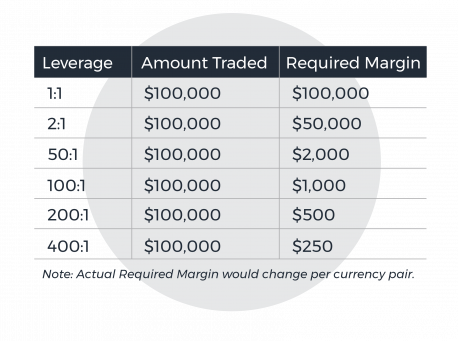Chapter 8
How Margin Trading Works
Retail traders are increasingly attracted to the Forex markets, because trading currencies has become increasingly accessible – available 24 hours a day, 5 days a week with potentially a low level of capital.
However, some concepts are still unclear to many new traders who wish to succeed in currency trading – even though a margin account may be opened, many traders aren’t able to provide a clear definition of margin trading, or leverage.
Yet both concepts are essential to fully understand how to profitably trade the foreign exchange market.
Let’s begin …
It is more suitable for short-term trading styles such as scalping, or day trading because these styles are seeking to extract profits from tiny price movements. The leverage then increases these profits.
When using leverage traders pay to fund the amount effectively borrowed. These funding costs increase over time and need to be taken into account when calculating profits and losses. The longer a trader keeps a rolling position open with margin trading, the higher the funding costs will be.
- Learn more, take our free course: Margin Trading Demystified
- Learn even more, take our free course: Margin Trading Products
What is margin trading?
Unlike cash accounts, margin accounts allow you to use borrowed money to open and hold financial positions.

Margin trading allows you to obtain a greater exposure to the asset than you would if you used your capital to trade the asset for cash.
For each position you want to open, there is a margin requirement associated, which is the amount of money you need to put aside, as collateral, or security deposit with your broker.
Watch: All About Forex Trading using Margin:
Leverage is a by-product of margin
By only putting up a small percentage of a position as margin, it creates leverage or as some call it, gearing.
- 5%, then your leverage will be 20:1
- 3%, then your leverage will be 33:1
- 2%, then your leverage will be 50:1
- 1%, then your leverage will be 100:1
- 0.5%, then your leverage will be 200:1
Let’s say that you’re able to put aside a $3,000 margin – this is your trading capital. Your broker offered you 30:1 leverage. This means that you can initially trade a maximum of $90,000 ($3,000 x 30) in trading positions. Of course, this amount will fluctuate depending on your profits or losses – not to mention commissions, interest and other fees.
If you want to trade a “lot” on the EUR/USD, which equates to €100,000, and your broker is asking for a 3.33% margin, this means that you only need to deposit €3,333 into your trading account, and the other 96.67% will be effectively loaned by your broker.
Key margin trading terms
There are some terms you’ll see in your trading platform that you need to know about, such as initial margin, maintenance margin, margin calls, and negative balance protection, among others.
Because this margin is only a small part of the full value of your position, this amount might not be enough to cover your losses if the market turns against you. You’ll then need to monitor your maintenance margin.
This occurs when the equity of your account falls below your broker’s margin requirements.
At that point, your broker may require a deposit of a certain amount of money in your trading account. If you don’t stump up the extra margin then the broker will close out your positions.
That day, the EUR/CHF currency pair dropped as much as 40% in just a few minutes, forcing FXCM’s clients to sustain more than USD 225 million in negative balances.
Many brokers offer negative balance protection – all EU regulated brokers must offer this as mandatory – which provides a safeguard to traders in times of higher volatility and trading volume, so retail traders don’t face a negative balance and owe more than they deposited.
Read: How ESMA’s new regulations change the trading landscape.
Risks of margin trading
Borrowing money to trade in a volatile market is risky, as prices can change rapidly, and there is a possibility that the market moves against you, which will, in turn, increase your losses.
More than that, markets can move so quickly that it’s possible for you to lose more money than your initial deposit, as your balance can turn negative after margin calls.
Keep an eye on your broker’s policies about margin requirements and leverage, as depending on the currency, or the inherent economical or geopolitical risks, these policies can affect your trading.
Remember: Trading on margin amplifies your profits AND your losses , which means that you need to follow money and risk management rules to avoid wiping out your trading account.
Read: Awesome Risk Management Strategies for Forex That Will Save You Money
So is margin trading good or bad
Well, margin trading is an incredible opportunity offered by brokers to trade large amounts of an asset in the financial markets with a small initial investment. Of course, this isn’t without any risks, but if managed well, you can amplify your profits while trading currencies.
For leverage to work in your favour as a trader you need to be profitable overall – if you are, leverage will enhance your profits, if you’re loss-making then leverage enhances losses. Taking the time to learn the skills needed to trade becomes even more important.
- Learn more, take our premium course: Trading for Beginners
Start learning now
Learn the skills needed to trade the markets on our Trading for Beginners course.
